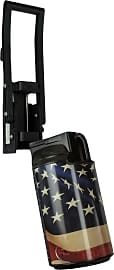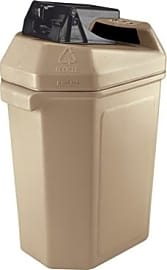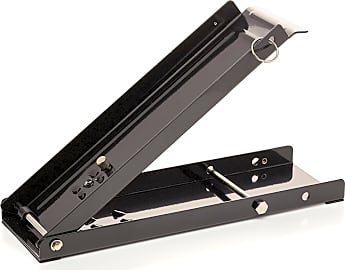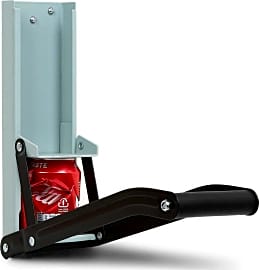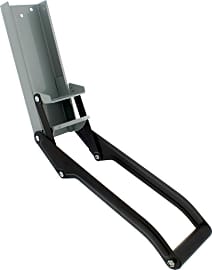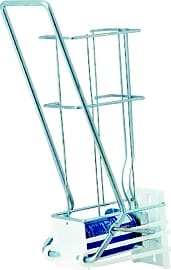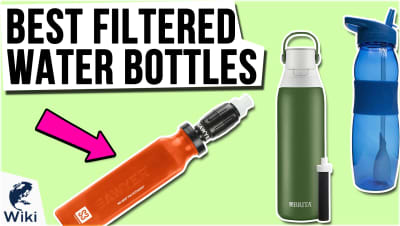The 9 Best Can Crushers

This wiki has been updated 37 times since it was first published in September of 2015. If your interest in saving the planet has you heavily invested in recycling, make your admirable passion a bit easier to execute with one of these can crushers. The more cans you can fit into your recycling bin, the less will end up in a landfill. Our selection features options that are ideal for home use as well as more advanced models that are suitable for workplaces or restaurants. When users buy our independently chosen editorial selections, we may earn commissions to help fund the Wiki.
Editor's Notes
July 30, 2021:
We removed a generic model that appears to have disappeared completely from the market, but otherwise haven't made any changes to the Wiki today. The Crusher 77701 is still the most popular and most durable choice, and is especially nice to use thanks to its enclosed design that minimizes the risk of splashes. For something a little less conventional, consider the Commercial Zone CanPactor, which is built into a garbage can, or the KitchenCraft Stand, which is foot operated and can make things really easy as long as it's properly mounted.
February 10, 2020:
The Commercial Zone Can Pactor was removed due to lack of availability. We also dropped the McKay Smasher from the list because the handle tends to fall apart, even if it has been subjected to relatively light use.
A couple notes on the KitchenCraft Stand: its freestanding, foot-operated design makes it stand out from the rest of the pack, and its ability to smash tin cans (like dog and cat food containers) is a definite plus as well. It’s not perfect, but it’s a nice alternative to wall-mounted models.
The MasterCrush Recycler — a new addition to the list — is one of the few options available that goes above and beyond crushing normal-sized cans. This versatile model can handle 32-ounce cans and plastic bottles as well.
Special Honors
BadAss Crusher Some may consider it overkill, but with this pneumatic crusher, you’ll be able to impress your buddies and maximize space in the recycling bin at the same time. It will flatten a can with the push of a button, and it comes with silencers to minimize noise. It’s available in three colors. badasscrusher.com
Troyer Brothers Monarch Restaurant and bar owners looking to upgrade from a manual crusher to an automatic model may want to consider the Monarch. It can smash up to five cans at a time, and its thick metal frame is built to last. You can choose from a stainless steel or a powder-coated enamel finish. troyerbrothers.net
What Differentiates One Can Crusher From Another?
This is relevant in terms of crushing thick cans, along with aluminum containers that are made to hold 16 oz or more.
Every can crusher is built for a similar purpose, and yet certain models are designed to do the job a little differently than others. The standard can crusher condenses an aluminum can into a disc, for example, whereas certain crushers can actually flatten an aluminum can into a sheet. One of the advantages being that if you throw your household recyclables out in a crate (as opposed to a bag), flat sheets will be easier to stack. Flat sheets will also be less likely to overflow or spill out, which makes it easier to carry your recyclables out to the curb.
The more cans you go through, the more you may want to consider a commercial can crusher, which is essentially an average crusher that has been attached to a larger recycling bin (the cans get crushed, and then they fall right in). Another option might be a crusher with a basket holder (for stockpiling 6-10 empty cans until you're ready to condense them). Either that or a dual crusher that's capable of condensing two cans at a time.
The longer a can crusher's handle, the more torque that crusher should be able to generate. This is relevant in terms of crushing thick cans, along with aluminum containers that are made to hold 16 oz or more. If a crusher is portable, it should weigh at least 5 lbs, so that it does not shift whenever it's being operated. If a crusher needs to be mounted, its description should include phrases like "wobble-free" or "safely-anchored" that offer a certain measure of reassurance.
Who Can Benefit From Owning a Can Crusher (& Why)?
If you are a homeowner, a business owner, a superintendent, or a constant consumer of canned beverages, a can crusher can save you a significant amount of time and space. Owning a can crusher not only means fewer trash bags and fewer trips to the bin, it also makes it easier to recycle cans for money, and to transport more cans to the local depository with each trip.
Mounting a crusher on your kitchen wall will help to remind family members that they should drain their cans before disposal.
Parents can use an aluminum crusher to teach their children about recycling. A lot of children enjoy not only pulling the lever on a crusher, but also seeing - and then hearing - the aluminum disappear inside. Mounting a crusher on your kitchen wall will help to remind family members that they should drain their cans before disposal. That, in turn, should lead to your recyclables attracting fewer insects, including bees, and ants, and flies.
Anyone who runs a restaurant, a cafeteria, or any high-traffic business might benefit from investing in a commercial can crusher (AKA a "canpactor"). Commercial crushers can condense your aluminum before dropping it directly into a disposable bin. The convenience of a commercial crusher is likely to result in less clutter, and it may also reduce the amount of cleanup at the end of every night.
Businesses that accumulate a significant number of cans may want to consider depositing their aluminum for a small profit; either that or dropping those cans off at a local processing center as a charitable donation. Certain donations may even be considered a tax write-off.
How Are Aluminum Cans Recycled?
You may wonder what happens to all of your aluminum cans after you have crushed them. While can-crushing is a great start, it is actually the first step in a much larger process. After your aluminum cans have been placed in a recycling bin, they are picked up by a sanitation team, which, in turn, delivers those recyclables to a local processing center or a relay station. Relay stations are used as a depot for transitioning items onto a tractor trailer. The tractor trailer collects recyclables from several different relay stations, en route to a regional processing center located somewhere up the road.
Either way, the entire process - from crushing a can in your home to having a recycled aluminum product appear on retail shelves - requires an average of six weeks.
After arriving at a processing center, aluminum cans are unloaded and sorted (to separate the aluminum from any misplaced trash, etc.), before being placed along a conveyor belt that sprays every item clean. The treated aluminum is then passed into a heating chamber, where it is melted at 1300 to 1400 degrees Fahrenheit, thereby removing any ink or other coating along its surface. After that, the liquid aluminum is congealed into industrial-sized blocks, which are known as ingots. Every ingot is comprised of aluminum from approximately 1.6 million cans.
Massive trailers transport the ingots to one or more development plants. Upon arrival, the ingots are broken down, with individual segments being prepped for production. One ingot could be delivered to a plant that makes aluminum siding, whereas another ingot could be delivered to a plant that makes aluminum cans. Either way, the entire process - from crushing a can in your home to having a recycled aluminum product appear on retail shelves - requires an average of six weeks.


